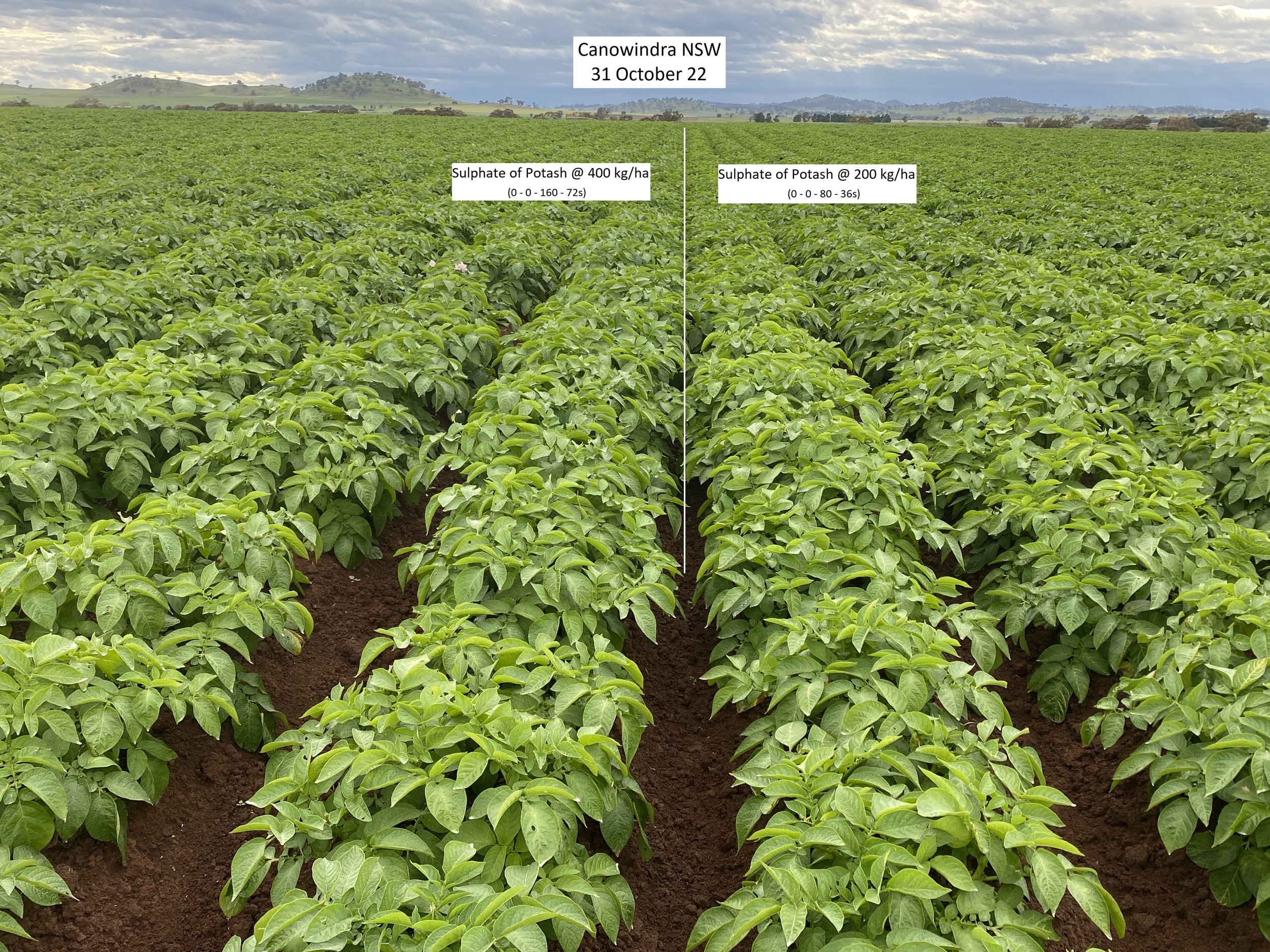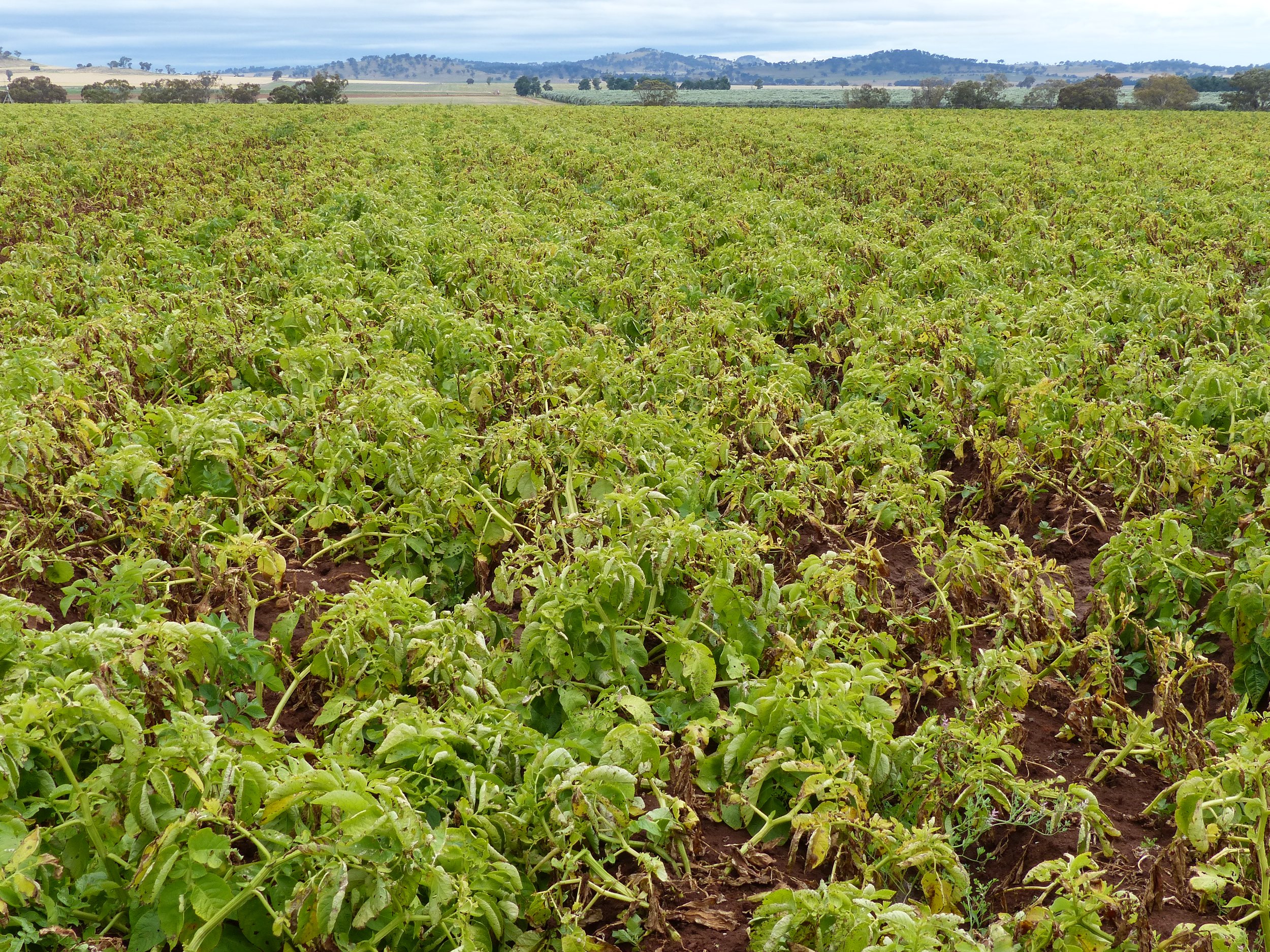Potassium Sulphate demonstration Canowindra NSW July – December 2022
By Marc Hinderager
“When you need it, you need it”
Many farms have big variations in their soil potassium levels from one paddock to another. The Canowindra demonstration site owned and operated by Dom Pace has soil K levels from 100 mg/kg all the way up to 600 mg/kg (0 – 20 cm). Dom and his son Chris are constantly trialling fertilisers to understand responses on their farm and the economic implications.
Excess potassium will tend to lower specific gravity, but a lack of adequate soil K is also associated with low specific gravity in potatoes. Therefore, low soil K paddocks need relatively large quantities of potassium applied, but high soil K paddocks will likely be negatively affected by applied K. Luxury consumption of potassium is typical in potatoes adding to the high penalty for over-application of potassium.
Potato crops remove more potassium than any other nutrient.
4 kg/t nitrogen.
6 kg/t phosphate.
6.5 kg/t potassium.
When in rotation with lucerne, another big user of K, available soil potassium can rapidly become deficient for both crops.
In July 2022 Dom and Chris planted paddock 6 with Atlantics. The soil tested low in potassium (160 mg/kg) and a total of 144 kg/ha of potassium was applied as sulphate of potash (SOP). The first topdress at early emergence or “hooking” stage was 74 units of K. However, on 36 rows this amount was doubled to see the response.
On 7 December 2022 (132 days after planting) rains finally subsided and a small hand-dig assessment was done by the Potato Link team to estimate yield differences. Unfortunately, the 530 mm of rain this crop received contributed to lower-than-average yields and some water rot issues. Specifically, the control had 5% rot, and the extra K had 1.7% rot. Chris Pace did not notice significant differences when harvesting the paddock.
In the small hand dig, the extra potassium increased yield by 9.1%. This was partly due to less water rot. Potassium increases the potato crop’s resistance to diseases, helps maintain tuber integrity and achieve high yields. For the hand-dug demo, the net benefit from the extra potassium applied was well over $1000/ha.
When you need it, you need it






